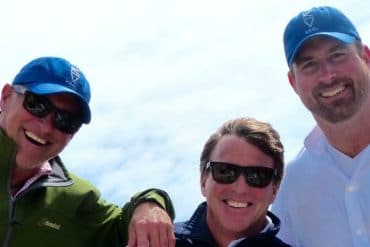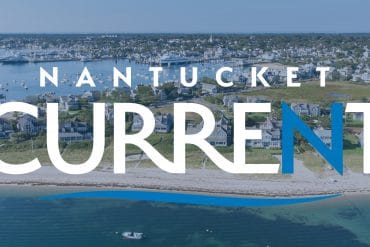A conversation with renowned golf course designer Tom Fazio.
Throughout his fifty years in golf course design, Tom Fazio and his staff of designers have been recognized for creating award-winning courses throughout the United States. No living designer has more credits on Golf Digest’s list of America’s 100 Greatest Golf Courses and Golfweek’s collection of America’s Best. On Friday, August 5th at 6 P.M, Fazio will be appearing at the Whaling Museum as part of the new Nantucket by Design week of events. N Magazine spoke to Fazio prior to his visit to the island.
N MAGAZINE: How did you first start in golf course design?
FAZIO: I came to the industry in a roundabout way and entirely due to family. I grew up in the suburbs of Philadelphia in Norristown, and in the 1940s and 1950s my uncle, George Fazio, was a pretty successful and accomplished professional golfer. The most notable moment was his showdown with Ben Hogan and eventual runner-up finish in the 1950 U.S. Open at Merion Golf Club. As his career was winding down going into the 1960s, George purchased a golf course and many Fazios, including myself, ended up working at the golf course performing the day-to-day operations and upkeep of the course.
 N MAGAZINE: What design elements do you consider your trademark to your courses?
N MAGAZINE: What design elements do you consider your trademark to your courses?
FAZIO: It may sound cliché, but I endeavor in each project to be as unique as I can with regard to design style or visual influence. If I am successful at that, then my courses should never be labeled as having typical “Fazio” features. In my mind, simply repeating or creating slight variations of what I (or other designers) have done in the past would be a disservice to our clients who hire us to create a one-of-a kind masterpiece for them.
N MAGAZINE: What do you think would be the biggest challenge in designing a course on an island like Nantucket?
FAZIO: Working on Nantucket would be a pleasure and rare opportunity. I don’t see any real obstacles that couldn’t be overcome as long as we work with the various regulatory agencies and develop a design that meets and/or exceeds the requirements that would be placed on the project. Working on Nantucket would undoubtedly afford us the chance to create something very special in keeping with the incredible natural beauty of the island.
N MAGAZINE: What is your favorite golf course that you didn’t design, and why?
FAZIO: I could name quite a few, but if I had to pick one it would be Pine Valley Golf Club in New Jersey. Pine Valley is often ranked as the #1 course in America, but more than that, Pine Valley has a special place in my history. When my uncle George was playing professional golf, only a handful of the top players could earn enough playing to be full-time players. Prize money back then was nothing like it is today. As such, many players would often hold a paying position at golf clubs and “play out of” those courses. They would work part time at the courses and augment their income from tournament play. George just happened to be connected in this way to Pine Valley and I was introduced to that venue at an early age. It is a special place and the golf course is second to none.
 N MAGAZINE: When designing a new course, does the natural landscape influence you, or do you prefer to start completely from scratch with your own ideas?
N MAGAZINE: When designing a new course, does the natural landscape influence you, or do you prefer to start completely from scratch with your own ideas?
FAZIO: My preference would always be to work with the natural terrain, features and vegetation and integrate the golf course routing into that environment as seamlessly as possible. In some cases, however, the project site is compromised in some way, or may have no environment at all. For example, I designed a golf course in Las Vegas in 1989-1990 named Shadow Creek. The site was a flat and completely featureless desert, with almost no vegetation to speak of. We literally had to create an environment and put a golf course in it by moving earth, planting trees and creating natural features such as streams and ponds. That project served to prove to me that almost any site can have a great golf course.
N MAGAZINE: What are some of the biggest mistakes you’ve seen in golf course design?
FAZIO: I avoid criticism of other designers, but one of the most common complaints I hear from friends relates to a course being too difficult for them. That is why we work so hard to make our courses appeal to all golfers. We want players to want to come back and play our courses again and again.
N MAGAZINE: What advice would you give someone that wants to pursue a career in golf course design?
FAZIO: Pursue a broad range of interests and subjects. Play lots of golf and really study the details of each course and why he/she does or does not like a particular course. Take an opportunity to be part of the construction and also ongoing maintenance of a golf course to gain a more thorough perspective on what it actually takes to get a golf course off the drawing table and into the ground.
N MAGAZINE: What are you most proud of in your career so far?
FAZIO: This journey has been so much more than I ever could have expected. I have had so many wonderful experiences and I’ve met so many good friends along the way. If I had to pick one thing, I would say that this career has given me the opportunity to give back to my community and to other worthy causes around the country. Specifically the Boys & Girls Club organization is very important to Sue and me, and we have been fortunate over the decades to be able to contribute to and advocate for this very worthy cause.






